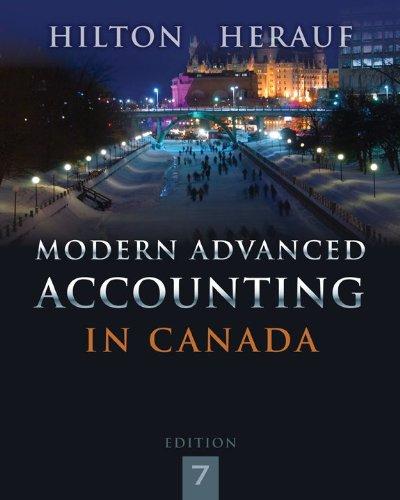Fast Ltd. is a public company that prepares its consolidated financial statements in accordance with IFRSs. Its
Question:
1. Fast Company gathered the following information related to inventory that it owned on December 31, Year 2:
Historical cost ................. $100,000
Replacement cost ................ 95,000
Net realizable value ............... 98,000
Normal profit margin as percentage of cost ...... 20%
2. Fast incurred research and development costs of $500,000 in Year 1. Thirty per cent of these costs were related to development activities that meet the criteria for capitalization as an intangible asset. The newly developed product was brought to market in January Year 2 and is expected to generate sales revenue for 10 years.
3. Fast sold a building to a bank at the beginning of Year 1 at a gain of $50,000 and immediately leased the building back for a period of five years. The lease is accounted for as an operating lease.
4. Fast acquired equipment at the beginning of Year 1 at a cost of $100,000. The equipment has a five-year life with no expected residual value and is depreciated on a straight-line basis. At December 31, Year 1, Fast compiled the following information related to this equipment:
Expected future cash flows from use of the equipment .......... $85,000
Present value of expected future cash flows from use of the equipment .... 75,000
Fair value (net selling price), less costs to dispose .............. 72,000
Required:
(a) Determine the amount at which Fast should report each of the following on its balance sheet at December 31, Year 2, using (1) IFRSs and (2) U.S. GAAP. Ignore the possibility of any additional impairment or reversal of impairment loss at the end of Year 2.
(i) Inventory
(ii) Research and development
(iii) Deferred gain on lease
(iv) Equipment
(b) Prepare a reconciliation of net income for Year 2 and shareholders' equity at December 31, Year 2, under IFRSs to a U.S. GAAP basis.
Financial Statements
Financial statements are the standardized formats to present the financial information related to a business or an organization for its users. Financial statements contain the historical information as well as current period’s financial... GAAP
Generally Accepted Accounting Principles (GAAP) is the accounting standard adopted by the U.S. Securities and Exchange Commission (SEC). While the SEC previously stated that it intends to move from U.S. GAAP to the International Financial Reporting Standards (IFRS), the... Balance Sheet
Balance sheet is a statement of the financial position of a business that list all the assets, liabilities, and owner’s equity and shareholder’s equity at a particular point of time. A balance sheet is also called as a “statement of financial...
Fantastic news! We've Found the answer you've been seeking!
Step by Step Answer:
Related Book For 

Modern Advanced Accounting In Canada
ISBN: 9781259066481
7th Edition
Authors: Hilton Murray, Herauf Darrell
Question Posted:





